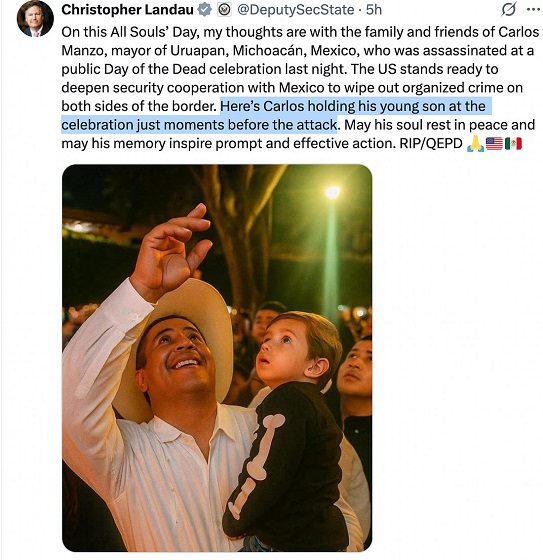Crime
Actor’s Death Raises Alarm about Off-Label Anesthetic

From Heartland Daily News
By ![]() Kevin Stone
Kevin Stone
A federal court has indicted and charged five individuals for contributing to the death of actor Matthew Perry by providing him with the anesthetic ketamine.
On October 28, 2023, Perry was found floating face-down in his hot tub. An autopsy later revealed his death had been caused by “acute effects of ketamine.” Perry, a star of the television show Friends, had long struggled with addiction.
Charged in the 18-count indictment are Perry’s personal assistant, Kenneth Iwamasa; two doctors, Salvador Plasencia and Mark Chavez; and two other individuals, Erik Fleming and Jasveen Sangha. Sangha was known as the “Ketamine Queen” who is accused of running a North Hollywood “stash house.”
Multiple Players Charged
Documents filed by prosecutors claim Perry’s assistant and an acquaintance worked with the two doctors and the drug dealer to provide tens of thousands of dollars worth of ketamine to fuel Perry’s addiction. Fleming coordinated the sale with Sangha, prosecutors say.
Iwamasa provided at least 27 ketamine injections to Perry in the five days leading up to his death, according to the prosecution. Chavez admitted selling ketamine to Plasencia for redistribution to Perry by falsifying information to a distributor and then using a prescription written in the name of a former patient.
When Plasencia texted another doctor about how much to charge Perry for the ketamine, he wrote, “I wonder how much this moron will pay,” and “Let’s find out,” prosecutors say. The trial date for Chavez and Plasencia is set for March 4, 2025.
Binge-Use Temptation
Ketamine is a dissociative anesthetic that can produce hallucinogenic effects. Ketamine is also used as a pain reliever and for the relief of treatment-resistant depression.
Some people use ketamine as a recreational drug for its ability to induce hallucinations. The effects of ketamine are short-lived, and users may rapidly develop tolerance to the drug, leading some to binge-use it.
Celebrity Power, Vulnerability
Ketamine is widely accepted as safe and effective for use as an anesthetic in a clinical setting. Off-label uses of the drug that may lead to abuse have led to rising concerns.
A recent New York Times article questioned the drug’s safety for off-label use in the wake of Perry’s death. Although ketamine ordinarily carries no more risk than other anesthetics, pain relievers, and antidepressants.
Celebrities can use their fame and wealth to circumvent effective safeguards against over-prescription and abuse, says Devon Herrick, a health economist.
“Physicians have significant leeway to prescribe FDA-approved medications off-label,” said Herrick. “Some off-label therapies later become mainstream, while others fall out of favor. What makes Matthew Perry’s situation unique was his celebrity status. Similar to the experience of Michael Jackson, Perry was able to enlist the help of physicians willing to provide him with a risky drug therapy not appropriately monitored.
“It’s unlikely a noncelebrity patient would be able to find a doctor willing to administer an anesthetic in their home,” said Herrick. “The lure of both money and bragging rights to say they’re a celebrity doctor likely culminated in Perry’s demise.”
Off-Label Benefits
Ketamine was developed as an anesthetic agent and was found to help treat some mental health conditions through off-label use, which is a common procedure, says Jeffrey Singer, a senior fellow at the Cato Institute who defends off-label use of the drug.
“Roughly 20 percent of all drugs prescribed in the U.S. are for off-label uses,” said Singer. “The [Food and Drug Administration, FDA] has always deferred to clinicians and clinical researchers on how to use drugs off-label. Once the FDA approves a drug for a particular indication, it permits clinicians to use it for any other indication where clinicians and clinical researchers believe the drug can be helpful.”
This real-world experience brings important knowledge, says Singer.
“As clinical research and clinical experience continue, such off-label drug use can lead to subsequent therapeutic advances,” said Singer. “However, clinical researchers often discover over time that specific off-label uses do not work. Over time, we should learn a lot more about what conditions ketamine works best for and what are the optimal ways to use it for those conditions.”
The system is working, says Singer.
“There is no reason why the FDA should add to the already cumbersome regulatory regime by requiring further approvals for off-label uses,” said Singer. “The FDA should leave the off-label uses of drugs to clinical researchers, clinicians, and the civil tort system.”
Black Market Problem
Adding new legal barriers to ketamine prescription would probably drive those wishing to abuse the drug into the black market, where its use would be wholly unmonitored and more dangerous drugs are also readily available, says Singer.
“People are already getting ketamine in the black market, along with other psychedelics such as MDMA, psilocybin, DMT, and magic mushrooms,” said Singer. “If the FDA further restricted online sales [of ketamine], it would only intensify profits in the black market and drive people to the black market, where the purity and strength of these drugs are less certain.
“We already have seen reports of black market MDMA—“ecstasy” or “Molly”—being laced with fentanyl,” said Singer. “Further restricting online sales of ketamine—or limiting its off-label use by licensed clinicians—will only make it more dangerous for people who continue to use ketamine. But it will not prevent them from using it.”
Kevin Stone ([email protected]) writes from Arlington, Texas.
Crime
Public Execution of Anti-Cartel Mayor in Michoacán Prompts U.S. Offer to Intervene Against Cartels

“I don’t want to be just another mayor on the list of those executed”
On the first night of November, during Day of the Dead celebrations, the independent, anti-cartel mayor of Uruapan in Michoacán, Carlos Manzo, was assassinated in the heart of his city during a public festival. His bloody murder has underscored the deadly risks faced by local officials who may lack adequate protection from a state that critics say is corroded by corruption and penetrated by powerful cartel networks that, in some regions, have supplanted government authority. The killing intensifies urgent questions about political and police corruption, cartel impunity, and the scope of U.S.–Mexico security cooperation — with a response from the U.S. State Department today offering to “deepen security cooperation with Mexico.”
Manzo, a fiercely outspoken anti-cartel mayor who took office in 2024 as Uruapan’s first independent leader, was gunned down as he stood before crowds at the annual Day of the Dead candlelight celebration. Witnesses said gunfire erupted shortly after Manzo appeared onstage, holding his young son moments before the attack. The festival, known locally as the Festival de las Velas, drew hundreds of families to Uruapan’s central plaza — now transformed into the scene of Mexico’s latest high-profile political assassination, and a catalyst for nationwide outrage, as online protests surged and citizens called for demonstrations against cartel violence.
According to early reports, at least two suspects have been detained and one attacker was killed on site. Authorities asserted — despite the success of the attack — that Manzo had been under National Guard protection since December 2024, with additional reinforcements added in May 2025 following credible threats to his life.
In Washington today, the killing drew political reaction. “My thoughts are with the family and friends of Carlos Manzo, mayor of Uruapan, Michoacán, Mexico, who was assassinated at a public Day of the Dead celebration last night. The United States stands ready to deepen security cooperation with Mexico to wipe out organized crime on both sides of the border,” Deputy Secretary of State Christopher Landau, the former U.S. ambassador to Mexico, said in a statement shared online.
Federal Security Minister Omar García Harfuch said the gunmen “took advantage of the vulnerability of a public event” to carry out the attack, despite a standing security perimeter.
President Claudia Sheinbaum condemned the killing as a “vile” assault on democracy and vowed there would be “zero impunity.” Her administration convened an emergency security meeting and pledged that the investigation would reach the “intellectual authors” of the crime. Yet the murder has already ignited outrage across Mexico over the government’s failure to protect local officials in cartel-dominated states such as Michoacán, where extortion, assassinations, and territorial disputes continue to erode basic governance.
Manzo had publicly warned of his fate. “I don’t want to be just another mayor on the list of those executed,” he said earlier this year, as he pressed the federal government for better coordination between municipal and military authorities. For years, Uruapan — an agricultural and trade hub in western Mexico — has been the site of deadly clashes between the Jalisco New Generation Cartel and remnants of the Knights Templar Organization, both vying to control lucrative extortion and drug routes.
The killing of Manzo fits a dark and familiar pattern. In 2025 alone, several mayors in Michoacán, Guerrero, and Tamaulipas have been killed in attacks widely attributed to organized-crime groups. In June, the mayors of Tepalcatepec and Tacámbaro were ambushed and slain while traveling in official convoys. More than 90 local officials have been murdered since 2018 — a rate that analysts say reflects how cartels target municipal governments to ensure political control over territories tied to narcotics, mining, and agriculture. Uruapan, at the heart of Mexico’s avocado belt, is a strategic prize for the cartels that tax every shipment leaving the region.
The mayor’s death also recalls earlier tragedies that scarred the nation. In 2012, Dr. María Santos Gorrostieta Salazar, the former mayor of Tiquicheo, was abducted and murdered after surviving two assassination attempts and defying cartel threats. Her death became emblematic of the dangers faced by reformers who refuse to cooperate with criminal groups. More than a decade later, Manzo’s murder illustrates that little has changed — except the brazenness of the attackers, now willing to strike in front of cameras and families celebrating one of Mexico’s most sacred holidays.
The killing has also reignited long-standing U.S. frustration over Mexico’s inability to stem cartel violence, even as the Trump administration has expanded counter-narcotics operations at the border. Under Trump’s renewed directives, the U.S. has classified several Mexican cartels as foreign terrorist organizations and empowered the Pentagon to develop strike options against high-value targets abroad. A September 2025 joint statement between Washington and Mexico City pledged deeper intelligence sharing and cross-border enforcement initiatives, including efforts to halt arms trafficking southward.
However, Mexico’s government remains deeply wary of any U.S. military involvement on its soil. President Sheinbaum has warned that “Mexico will not stand for an invasion in the name of counter-cartel operations,” rebuffing Republican calls for unilateral action. Her position lays bare a long-standing tension between Mexico’s need for U.S. support and its insistence on sovereignty — a fault line that Manzo’s killing has reignited.
The Bureau is a reader-supported publication.
To receive new posts and support my work, consider becoming a free or paid subscriber.
Crime
Canada Seizes 4,300 Litres of Chinese Drug Precursors Amid Trump’s Tariff Pressure Over Fentanyl Flows

In what appears to be the second-largest Chinese precursor-chemical seizure in British Columbia in the past decade, Canadian border and police officials announced they intercepted more than 4,300 litres of chemicals used to manufacture fentanyl and other synthetic drugs at a notoriously troubled port in Delta, B.C.
The announcement of a seizure that occurred in May 2025 comes amid President Donald Trump’s continuing pressure on Ottawa to crack down on fentanyl trafficking in the province — which U.S. officials say has become a key production and shipment point for Chinese and Mexican traffickers.
The seizure — announced jointly by the Canada Border Services Agency (CBSA) and the RCMP — underscores the scale and persistence of global trafficking networks funnelling illicit materials into Canada’s drug markets.
According to the agencies, border officers examined two marine containers that arrived from China in mid-May, both bound for Calgary, Alberta. Acting on intelligence developed by CBSA’s Pacific Region, officers discovered 3,600 litres of 1,4 Butanediol, a key ingredient for producing GHB, often known as the “date-rape drug”; 500 litres of Propionyl Chloride, a chemical precursor used to synthesize fentanyl; and 200 litres of Gamma Butyrolactone (GBL), another controlled intoxicant.
The chemicals were concealed inside 60 clear jugs and 20 blue drums within the containers. Investigators believe the shipment was intended for use in clandestine drug laboratories. The RCMP confirmed that an investigation into the importation network remains ongoing.
The seizure comes amid growing concern about Canada’s port security, particularly in Metro Vancouver, where experts and local officials say criminal networks are exploiting gaps in federal enforcement.
The Delta seizure follows a series of major CBSA operations targeting precursor chemicals at Pacific ports. In May 2022, CBSA officers in the Metro Vancouver District examined a container from China declared as “toys” and discovered 1,133 kilograms of the fentanyl-precursor chemical Propionyl Chloride, with the potential to produce more than a billion doses of fentanyl.
Public Safety Canada also reported that in the first half of 2021, CBSA seized more than 5,000 kilograms of precursor chemicals, compared with just 512 kilograms in 2020 — reflecting what officials called a “dramatic escalation” in attempts to smuggle fentanyl inputs into the country.
In 2023, the City of Delta released a report highlighting major vulnerabilities at port terminal facilities, warning that there is “literally no downside” for organized criminals to infiltrate port operations. The report noted that British Columbia’s provincial threat assessment rated ports as highly susceptible to corruption and organized-crime infiltration.
At the time, Delta Mayor George Harvie called the lack of a dedicated national port-policing force “a threat to national security.” In comments to the Canadian Press, Harvie said that while Canada’s ports fall under federal jurisdiction, the “total absence of uniformed police at the facilities makes them obvious targets for criminal elements — from Mexican drug cartels to biker gangs.”
“We’re witnessing a relentless flow of illegal drugs, weapons and contraband into Canada through our ports, and that threatens our national security,” Harvie said.
The Port of Vancouver complex, which includes major terminals in Delta, Surrey, and Vancouver, handles roughly three million containers annually, with millions more expected as port expansion plans move forward.
The Delta report reiterated how difficult it has become to police these sprawling operations since the Ports Canada Police were disbanded in 1997. More than a quarter-century later, Harvie said, the consequences of that decision are now “alarmingly clear.”
The CBSA announcement today comes as U.S. President Donald Trump has imposed tariffs on Canadian exports, accusing Ottawa of failing to interdict the flow of fentanyl and precursor chemicals trafficked through British Columbia ports. Washington has repeatedly pressed Canada to strengthen port enforcement and anti-money-laundering controls, citing the West Coast’s role in China- and Mexico-linked trafficking networks.
Simultaneously, in trade negotiations with Beijing, Mr. Trump announced a reduction in tariffs tied to the fentanyl supply chain — raising concern that Washington has eased pressure on China, the primary source of finished fentanyl now responsible for hundreds of thousands of overdose deaths across North America.
Subscribe for free to receive new posts and support my work.
For the full experience, please upgrade your subscription and support a public interest startup.
We break international stories and this requires elite expertise, time and legal costs.
-

 Environment1 day ago
Environment1 day agoThe era of Climate Change Alarmism is over
-

 Aristotle Foundation19 hours ago
Aristotle Foundation19 hours agoB.C. government laid groundwork for turning private property into Aboriginal land
-

 Business1 day ago
Business1 day agoYou Won’t Believe What Canada’s Embassy in Brazil Has Been Up To
-

 Crime19 hours ago
Crime19 hours agoPublic Execution of Anti-Cartel Mayor in Michoacán Prompts U.S. Offer to Intervene Against Cartels
-

 Automotive1 day ago
Automotive1 day agoCarney’s Budget Risks Another Costly EV Bet
-

 Bruce Dowbiggin5 hours ago
Bruce Dowbiggin5 hours agoA Story So Good Not Even The Elbows Up Crew Could Ruin It
-

 Business1 day ago
Business1 day agoMystery cloaks Doug Ford’s funding of media through Ontario advertising subsidy
-

 Censorship Industrial Complex1 day ago
Censorship Industrial Complex1 day agoSenate Grills Meta and Google Over Biden Administration’s Role in COVID-Era Content Censorship





